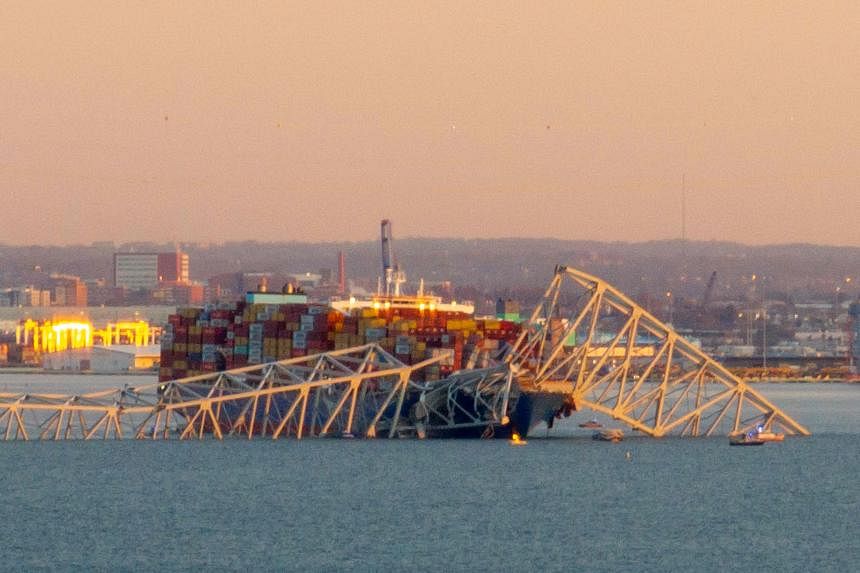Baltimore’s Francis Scott Key Bridge collapsed on March 26 after a container ship smashed into the structure, which plunged cars into the water. A Singapore-registered vessel reportedly crashed into the bridge.
It is a major traffic and transportation hub for the United States’ East Coast and the entry point to the Port of Baltimore.
Bridge history
The four-lane steel bridge opened in 1977 after five years of construction and spans 2.6km.
It crosses over the Patapsco River, where US national anthem author Francis Scott Key wrote the Star-Spangled Banner in 1814 after witnessing the British defeat at the Battle of Baltimore and the British bombing of Fort McHenry. It has 56m of vertical clearance.
Built at an estimated cost of US$110 million (S$148 million), it allowed for more traffic lanes, and carried lower operating and maintenance costs than a tunnel.
Traffic and transport info
The bridge carries 11.3 million vehicles a year, the Maryland Transportation Authority says, on the I-695 highway that circles Baltimore, also known as the Baltimore Beltway.
Other bridges impacted
Other structures along the route include a 1km dual-span drawbridge over Curtis Creek and two 1.2km parallel bridge structures that carry traffic over Bear Creek, near Bethlehem Steel’s Sparrows Point plant.
Commute disruptions
The Maryland Transportation Authority called the incident a “major traffic alert” and redirected cars to the I-95 or I-895 highways. Large trucks are prohibited from using the 1-95 tunnel route that goes under the Baltimore harbour.
Baltimore port traffic
Because of the bridge’s collapse, ships are not leaving the Port of Baltimore, shipping and insurance sources say.
Over 40 ships remained inside the Baltimore port, including small cargo ships, tugboats and pleasure craft, data from ship tracking and maritime analytics provider MarineTraffic showed on March 26.
At least 30 other ships had signalled their destination was the Baltimore port, the data showed. REUTERS

